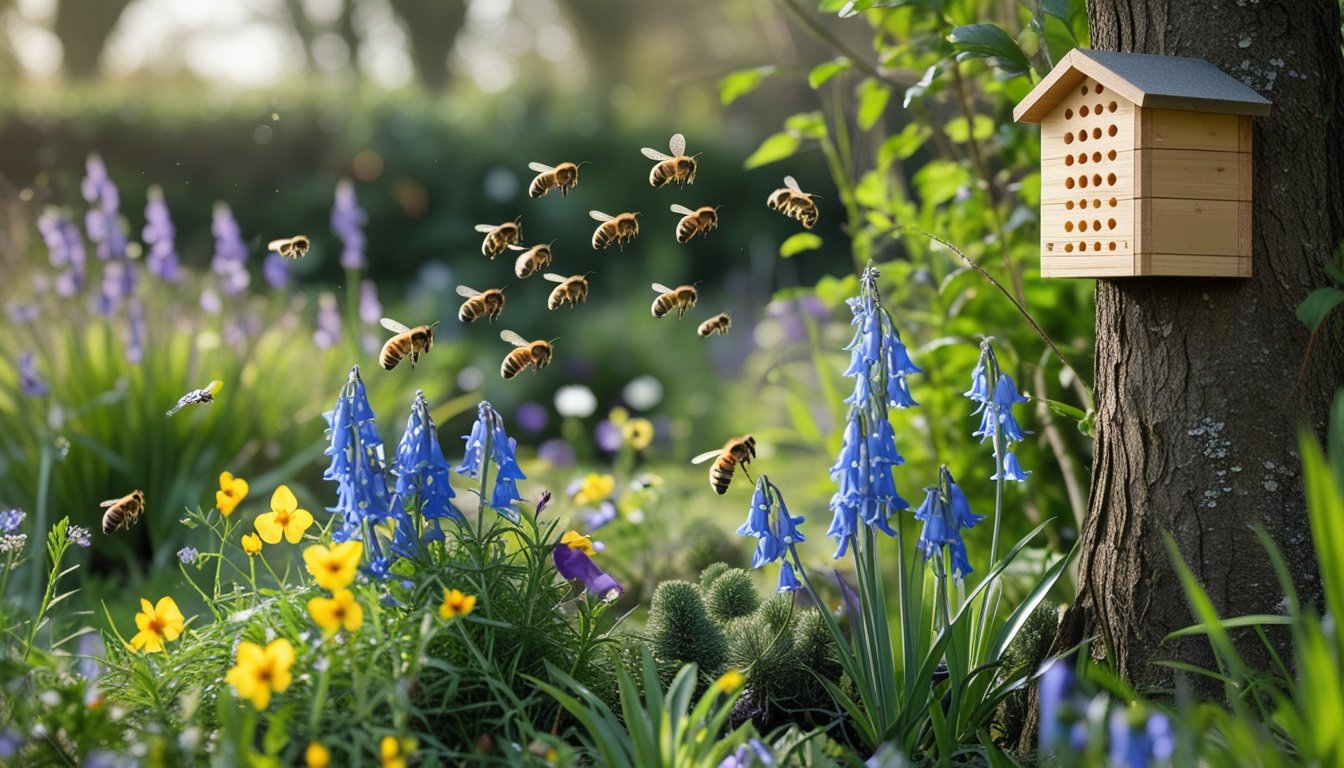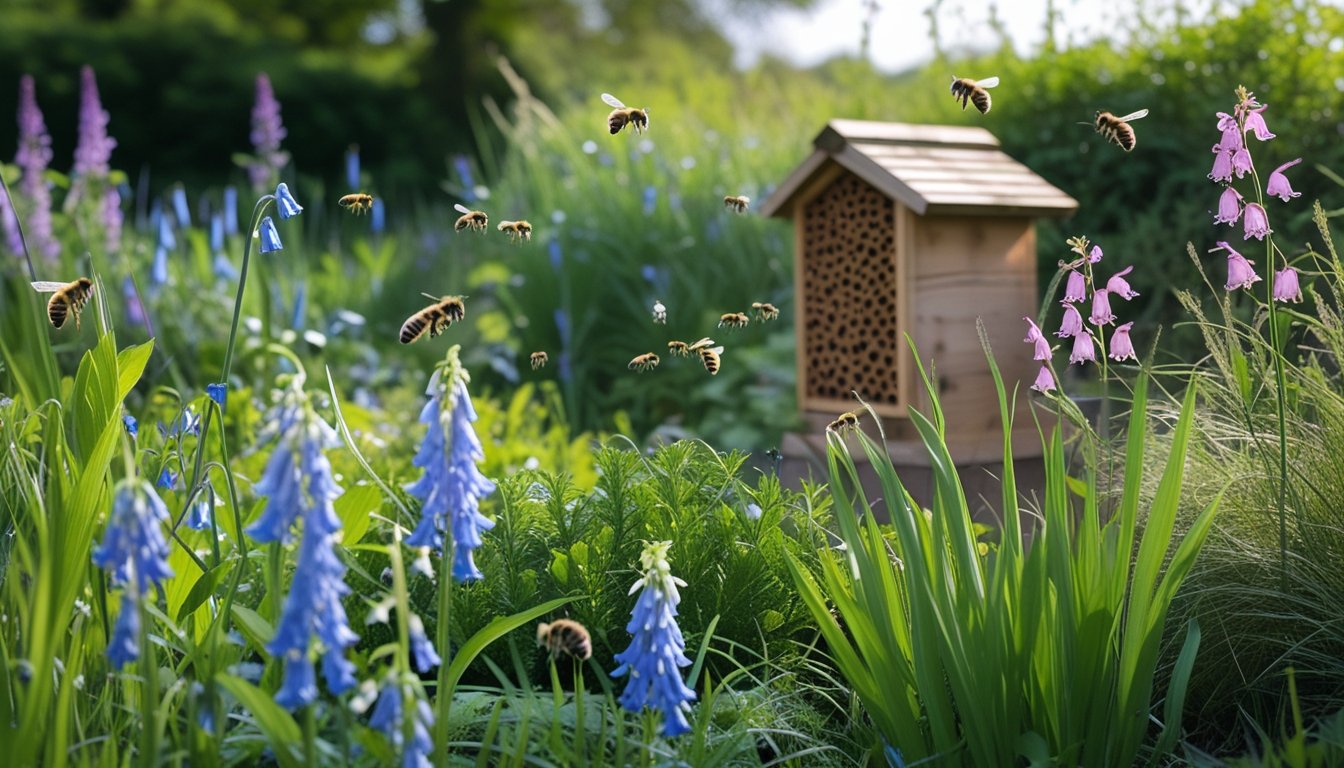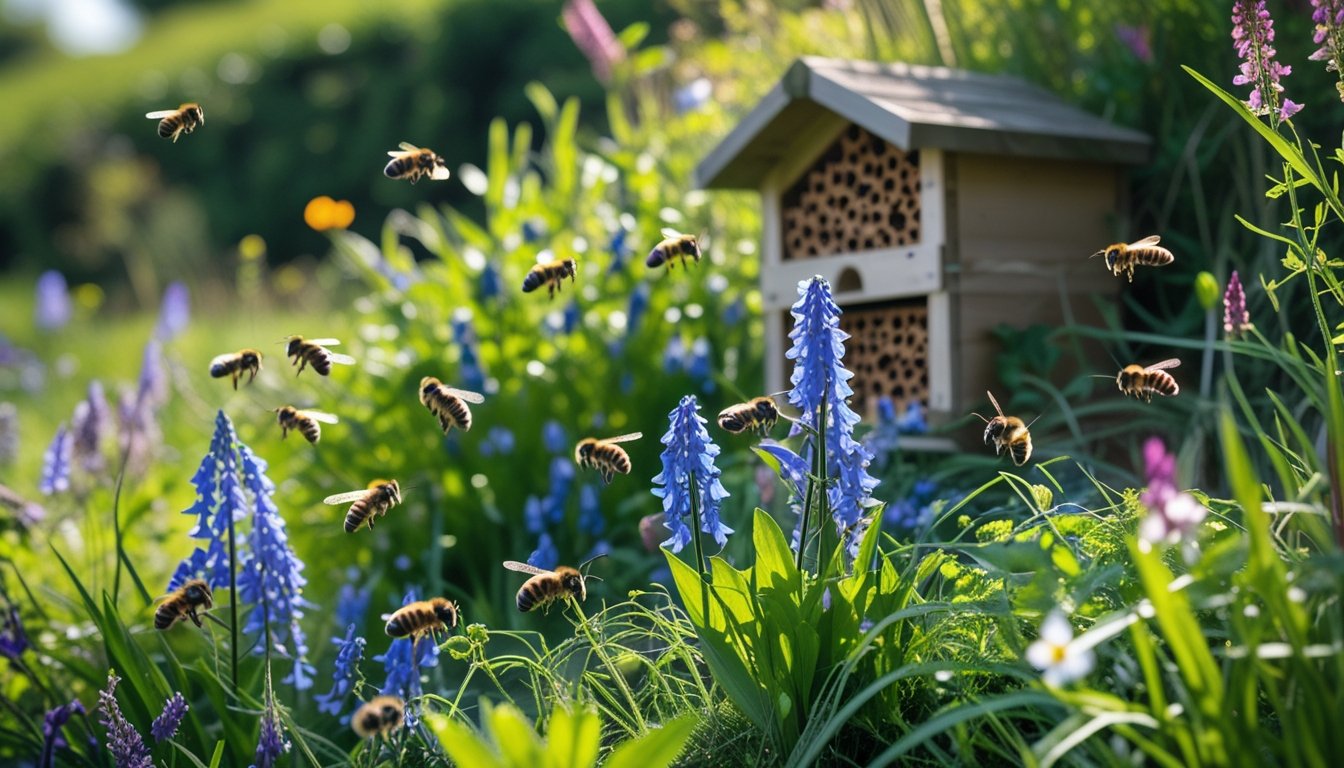Late updated: 21 Jul 2025 09:07
Written by: Emily Thornton
Creating A Native UK Plant Habitat For Bees: Essential Tips and Strategies
In the vibrant tapestry of our local ecosystems, bees play a pivotal role as pollinators. By focusing on native plants, we can provide the resources these essential insects need to thrive. Creating a native UK plant habitat for bees not only supports their survival but also enriches our gardens, benefiting the wider environment. These plants are best suited to support the bees that have evolved alongside them, offering food and shelter while reducing the need for artificial interventions.

Native plants have a unique resilience, adapted perfectly to our climate and local conditions. They offer nectar-rich blossoms that attract a variety of bee species, from bumblebees to solitary bees. By integrating these plants into our outdoor spaces, we create not just a visually appealing environment but also a buzzing hub of biodiversity. This effort aligns our actions with the natural rhythms of life, ensuring a sustainable future for these crucial pollinators.
As we embark on this journey to create a sanctuary for bees, practical steps include selecting the right plants, positioning them strategically, and maintaining a harmonious balance. By doing so, we foster an environment where bees can nest, feed, and flourish. Each plant choice and garden decision becomes a step towards nurturing a thriving habitat that supports not just bees, but the entire spectrum of local wildlife.
Key Takeaways
- Native plants support the survival of local bee species.
- These plants reduce the need for chemical interventions.
- Creating a bee-friendly habitat enriches local ecosystems.
Key Principles for Creating a Native UK Plant Habitat for Bees
Creating a habitat rich in native UK plants can significantly enhance the support we provide to our bee populations. Recognising the essential role these pollinators play in ecosystems and addressing the challenges they face is critical.
Understanding the Importance of Native Plants
Native plants are adapted to the local climate and soil conditions, making them a vital resource for bees. They offer nectar and pollen that bee species have relied on for centuries. By planting a variety of local species, we create supportive environments where bees can flourish. Additionally, native vegetation reduces the need for artificial fertilisers and pesticides, promoting a healthier, more sustainable habitat.
Supporting Bee Populations Through Biodiversity
Biodiversity within a habitat not only supports bee populations but enriches the entire ecosystem. A mix of flower types ensures that pollinators have access to food sources which cater to their various needs. For bees, a diverse plant life provides a continuous supply of nectar and pollen throughout the year. This biodiversity encourages healthier and more resilient bee communities, essential for pollination.
The Role of Pollinators in Local Ecosystems
Pollinators are cornerstones of ecological health, directly influencing the reproduction of flowering plants. Bees contribute to the production of seeds, fruits, and nuts, which are vital food sources for other wildlife. Their activities help maintain the balance and health of ecosystems. By supporting bee populations, we are actively fostering the stability of food webs and biodiversity.
Factors Impacting Bees: Habitat Loss, Pesticides, and Climate Change
Several challenges threaten bee populations. Habitat loss from urbanisation reduces the availability of native flora. Pesticides negatively affect bees' navigation and foraging abilities, while climate change alters flower blooming patterns, disrupting bee feeding cycles. To counter these threats, creating diverse native plant habitats can buffer bee communities and navigate these changes effectively.
Practical Steps to Establish a Bee-Friendly Native Habitat

To foster a thriving bee-friendly environment, it is essential to prioritise native UK flora and ensure a diverse array of nectar and pollen sources. Additionally, designing thoughtful planting schemes and considering habitat safety for nesting are key components.
Selecting Native UK Flora: Flowers, Shrubs, and Meadows
We must choose flora that provides year-long nectar and pollen. Bluebells, lavender, and verbena are excellent selections. Each blossoms at different periods, ensuring constant food supply.
Clover and bee balm—also known as monarda—are beneficial. For shrubs, salvia and eucalyptus offer additional cover and resources. Cultivating meadows with mixed wildflowers supports biodiversity. It's crucial to select plants well-adapted to our local climate, as they’ll not only thrive but require less maintenance.
Designing Nectar- and Pollen-Rich Planting Schemes
Creating planting plans rich in nectar and pollen is vital. By grouping flowers like echinacea, trifolium, and sunflowers together, we boost visual appeal and benefit multiple bee species, including bumblebees, honeybees, and solitary bees.
Consider plant height and bloom time to make a visually and seasonally diverse habitat. Use mulching to preserve soil moisture and discourage weeds. This practice promotes healthy plant growth and a reliable food source for pollinators throughout the year. Maintaining dedicated spaces for varied flowers ensures bees have continual floral availability.
Creating Nesting Sites and Safe Spaces for Bees
Diverse nesting habitats cater to varying bee species. Ground-nesting bees benefit from patches of bare soil, while brush piles serve as valuable shelters for many bee types. Incorporating shrubs can also provide essential shelter and resources.
Solitary bees prefer structures like nesting boxes, which mimic natural cavities in deadwood. Strategic placement of these features near food sources enhances their usefulness and appeal. Ensuring the absence of pesticides and other chemicals keeps local wildlife, including butterflies and moths, safe.
Organic Gardening Techniques for Bee Safety
Organic methods boost bee health and safety. Weeding manually or with eco-friendly alternatives reduces chemical exposure. Natural deterrents, like strategic companion planting, protect without harming bees.
Crop rotation can help manage pests and diseases organically. This method maintains soil fertility, promoting consistent growth of flowering plants that bees are drawn to. Integrating these practices aids in sustaining a bee-friendly habitat that aligns with ecological principles. Our conscious efforts are crucial in preserving these essential pollinators.
Frequently Asked Questions

In this section, we explore various practical tips to create a vibrant habitat for bees. From selecting low-maintenance plants to designing small spaces, these insights help support bee populations in your garden.
What are the best low-maintenance plants to attract bees in the UK?
There are several low-maintenance plants perfect for attracting bees. Lavender and rosemary are great options. Both thrive with minimal care and provide bees with abundant nectar. Sedum, with its succulent leaves and vibrant flowers, is also an excellent choice for UK gardens.
Which flowers can attract bees and butterflies throughout the whole year?
To ensure year-round attraction for bees and butterflies, consider planting hellebores for winter blooms and crocuses in early spring. Foxgloves and poppies flourish in the summer, while Michaelmas daisies provide autumnal sustenance. This selection creates continuous opportunities for pollinators.
How can I create a bee-friendly environment in limited space, such as pots or small gardens?
In confined spaces, opt for vertical gardening or container planting. Use pots to grow bee-friendly herbs like thyme and marjoram. Mixed planter boxes with a variety of native flowering plants can provide diverse nectar sources. These techniques enable us to support pollinators, even with limited room.
What are some top plant selections to support local honeybees in the UK?
To aid local honeybees, choose plants like clover and borage. Both are known for their nectar-rich profiles. Heathers also attract bees while adding colour to the garden. These selections are ideal for those looking to support honeybee populations effectively.
How do you design a garden that serves as a sanctuary for bees?
Create a bee sanctuary by incorporating diverse plant species, ensuring overlapping bloom periods. Use indigenous plants, as they are familiar to local bees. Build bee hotels or nesting sites to enhance habitat complexity. Our efforts in careful garden design provide essential resources for bee conservation.
Can you list native UK plants that are known for attracting a wide variety of pollinators?
For those aiming to attract a range of pollinators, wild violets and oxeye daisies are key choices. Red clover and bird's-foot-trefoil also draw various species. These native plants are well-suited to local conditions, requiring less maintenance while offering essential resources.
